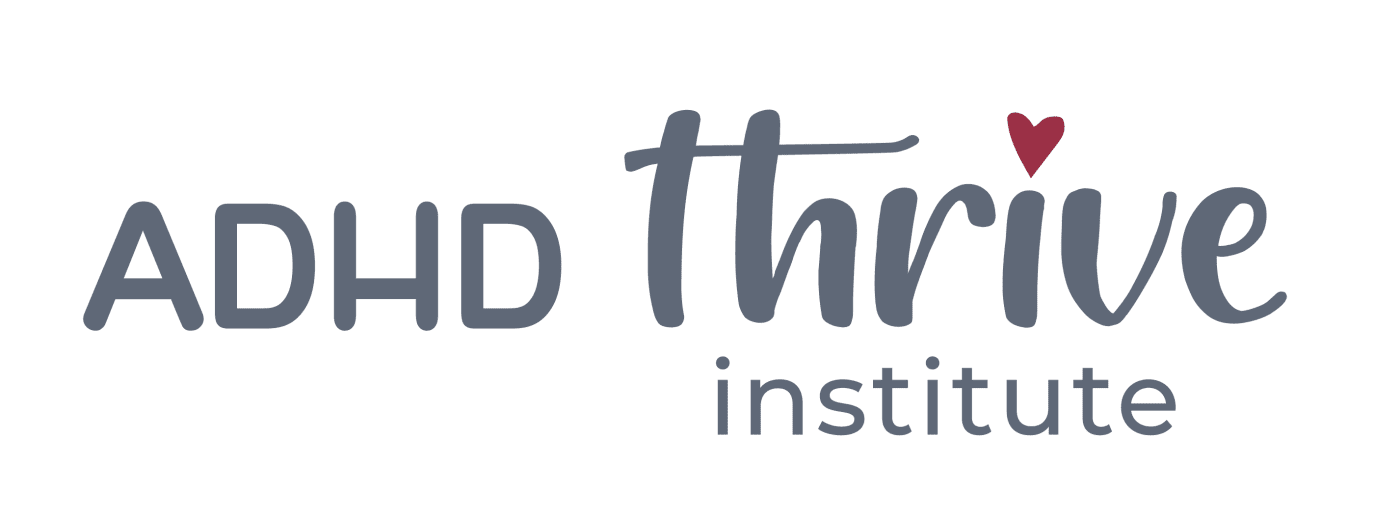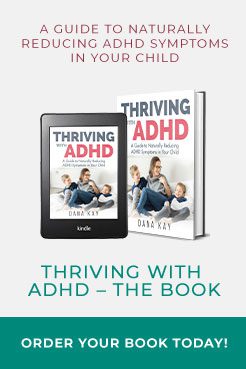You’ve heard it before, maybe from a teacher, a counselor, or even a well-meaning friend.
“He’s bright. He just needs to try harder.”
“She’s so creative, but she’s always off task.”
“They’re not failing, so it’s probably not a big deal.”
But as a parent, you see what’s really happening behind the scenes: the forgotten homework, the emotional outbursts after school, the constant reminders just to brush teeth, pack a backpack, or sit still for five minutes. You also see the shame, the self-doubt, and the exhaustion (for both of you).
You know your child needs support, but figuring out how to get it at school can feel like solving a puzzle with missing pieces.
IEP? 504? Accommodations? Evaluations? What does your child actually qualify for? What are you supposed to ask for? And what happens if the school pushes back?
In this post, we’ll break it all down.
- What’s the difference between an IEP and a 504 plan for ADHD?
- Does ADHD even qualify for an IEP? (And what if they say no?)
- Which ADHD accommodations and goals actually help with ADHD?
- What to do when you feel dismissed or overwhelmed
- And why the best support doesn’t come from school alone but also from strengthening what’s happening at home
You don’t have to be a lawyer or an expert to advocate for your child. You just need to understand what’s possible and what your rights are.
Let’s walk through it together.
What’s the Difference Between an IEP and a 504 Plan?
If you’re a parent trying to figure out school support for your child with ADHD, you’ve probably heard these two terms thrown around: 504 Plan and IEP. But what do they really mean? And how do you know which one your child needs?
Let’s break it down simply.
A 504 Plan helps level the playing field. It is part of a federal law that says schools must give kids with disabilities or challenges equal access to learning. For ADHD, that usually means accommodations, or simple changes to how your child learns, not what they learn. The focus is on accommodations or changes to the environment or process, not the curriculum itself.
A 504 plan is often easier and quicker to get than an IEP, especially for kids who are bright, passing their classes, or don’t need special instruction (just a little extra support).
A 504 plan also has a broader criteria than an IEP. Any disability that substantially limits a major life activity (like learning) qualifies. Academic performance (such as good grades) does not necessarily prevent eligibility if the disability affects learning or other aspects of school life.
An IEP (or Individualized Education Program) goes deeper and offers more services. It is part of a different federal law called IDEA. It’s for kids who need special education services to make progress at school. The IEP provides specially designed instruction, measurable goals, and possibly related services like speech or occupational therapy.
In order for a student to get an IEP, he or she must meet criteria under one of the 13 disability categories in the Individuals with Disabilities Education Act (IDEA). ADHD usually falls under “Other Health Impaired (OHI)” if it causes serious educational impact.
So this means that if ADHD is really impacting your child’s ability to learn, even with help, they may be eligible.
Here’s what makes an IEP different:
- It includes personalized academic goals like improving focus, emotional control, or writing.
- It can provide services like speech therapy, occupational therapy, or behavior support.
- It requires the school to track progress and adjust the plan regularly.
So if your child needs accommodations AND instruction or services, then an IEP plan may be the better fit.

Wait…Is a 504 or IEP better for ADHD?
ADHD can actually qualify a student for either a 504 or an IEP. One is n ot better or worse. It just depends on how much a student’s ADHD affects their ability to learn in school.
Think of it like this:
If your child only needs accommodations (and not specialized instruction), a 504 Plan is usually appropriate.
On the other hand, if your child’s ADHD severely impacts their ability to learn (even with supports) or they need special education services, an IEP may be more suitable.
Schools may suggest a 504 first, especially if a student has passing grades, but grades alone do not determine eligibility.
Remember, though, neither ADHD nor any learning disability automatically guarantees a 504 Plan or IEP; an evaluation must show that the disability substantially affects the child in school.
Parents can request evaluations and advocate for consideration under both laws, especially if they believe the school has not fully recognized their child’s needs. Some children with ADHD may have both a 504 Plan and an IEP if they require both accommodations and specialized instruction.
In the next section, we’ll talk about what to do if the school says no.
What if the school says no?
This happens more often than it should. You might hear things like: “They’re doing fine academically.” Or maybe, “They just need to try harder.” Or, “Let’s wait and see.”
But if your gut says your child needs support, you’re allowed to push for it. Here’s what you can do:
- Request a formal evaluation in writing. Schools are legally required to respond within a certain time frame.
- Bring outside documentation. A neuropsych evaluation or ADHD diagnosis can help make your case.
- Know your rights. You have the right to disagree with the school’s decision and request an independent evaluation.
- Ask about a 504 Plan if an IEP is denied. It’s often easier to qualify, and it can still make a big difference.
- If your child already has a 504 Plan that’s not working, it might be time to revisit the IEP conversation.
You don’t have to take no as the final answer. Schools have limits, but you have power as a parent who knows your child best.
Common ADHD Accommodations in 504 and IEP Plans

If your child is approved for a 504 Plan or an IEP because of ADHD, the next big question is: What kind of support can you actually ask for?
This is where things get real and where you, as the parent, can make a powerful difference.
Let’s break it down into two simple buckets: accommodations (504 Plan) and services/goals (IEP).
ADHD 504 Plan Accommodations: Making the Environment Work for the Child
504 Plans are about leveling the playing field so your child can access learning like their peers. These plans don’t include specialized instruction but instead include smart, supportive adjustments that reduce overwhelm and distraction.
Here are some of the most common (and helpful) ADHD 504 accommodations:
- Preferential seating (front of the room, near the teacher, away from distractions)
- Frequent breaks or movement opportunities
- Extended time on tests and assignments
- Chunking work into smaller steps with frequent check-ins
- Use of fidgets, timers, or noise-canceling headphones
- Alternate testing location
- Reduced homework load to prevent burnout
- Visual schedules and reminders
- Teacher check-ins for understanding directions
As you might have noticed, these don’t require special education services – just a clear written plan, agreed on by the school team.
IEP Services for ADHD: Going Deeper When Accommodations Aren’t Enough
An IEP offers everything a 504 Plan does (and more).
If your child qualifies for an IEP under the “Other Health Impairment (OHI)” category, the school is legally required to provide individualized instruction and measurable goals to help them succeed.
Here are examples of IEP supports for ADHD:
- Executive function support: teaching planning, time management, and organization skills
- Behavioral support plan (BSP): strategies for regulation, including sensory tools or scheduled breaks
- Check-ins with a special education teacher or counselor
- Social-emotional learning goals: like managing frustration or self-advocating for help
- Small group instruction or additional help with reading/writing/math if they’ve fallen behind
- Visual aids, timers, task checklists, or graphic organizers
- Progress tracking for focus, participation, or work completion
You can also ask for customized IEP goals for ADHD like the following:
“By the end of the quarter, my student will independently initiate tasks in 4 out of 5 observed opportunities.”
“My student will use a visual checklist to complete multi-step assignments with no more than 1 prompt in 80% of trials.”
The key here is that the supports should target the actual challenges your child faces due to ADHD, not just general school struggles.
So, whether it’s a 504 Plan or an IEP, the right support exists, and you have every right to ask for it. The law protects your child’s right to learn in a way that works for their brain.
ADHD IEP Goals That Actually Help
Once your child qualifies for an IEP due to ADHD, one of the most impactful parts of their plan is the goals section. This is where the school outlines exactly what they’re going to help your child achieve and how they’ll measure that progress.
But here’s the problem: Many IEPs include vague, generalized goals like “Student will improve focus” or “Student will complete classwork independently.” These sound fine on paper… but they’re not specific enough to be useful. And without clarity, it’s hard to know if anything’s actually improving.
So, what makes a good IEP goal for ADHD?

It needs to be:
- Specific (clearly states what the child will do)
- Measurable (there’s a way to track progress)
- Achievable (realistic given the child’s current challenges and support)
Let’s look at some examples of IEP goals that actually support executive function, self-regulation, and classroom performance for students with ADHD.
Sample IEP Goals for ADHD
✅For focus and task initiation:
“By the end of the quarter, [Student] will begin independent tasks within 2 minutes of instruction in 4 out of 5 opportunities, with no more than one prompt, as measured by teacher observation.”
✅ For organization and planning:
“[Student] will record homework assignments in a planner or digital tool daily with 80% accuracy over a 4-week period.”
✅ For completing multi-step tasks:
“Using a visual checklist, [Student] will complete multi-step classroom tasks with no more than one teacher prompt in 80% of observed trials.”
✅ For emotional regulation:
“When frustrated or overwhelmed, [Student] will use a taught coping strategy (e.g., deep breathing, asking for a break) in 3 out of 4 observed opportunities, as measured by teacher data collection.”
Each of these examples targets a specific ADHD-related challenge and includes a measurable outcome to track success. These goals are designed to help your child build real-life skills and reduce the impact ADHD has on their learning experience.
Can I Change My Child’s IEP Goals?
Yes. If the goals in your child’s IEP aren’t working or if they don’t reflect your child’s biggest challenges, you can request to revise them. This is your right as a parent, and you don’t have to wait for the annual review to do it. Simply request an IEP meeting to discuss updating the goals to better match your child’s needs.
Remember: IEP goals should be built with you, not handed to you. Don’t be afraid to ask for changes that reflect your child’s real executive function struggles. Because the more the IEP goals align with your child’s brain, the more meaningful the support will be.
Advocating for Your Child Without Burning Out
If you’ve ever walked into a school meeting with a pit in your stomach or left one feeling like no one really heard you, you’re not alone. Advocating for your ADHD child in the school system can feel exhausting, emotional, and confusing.
But here’s the truth: You can speak up, ask questions, and push for better support without burning yourself out or becoming “that parent.”
Here’s how to advocate effectively and protect your energy:
- Collaborate, Don’t Confront
Most teachers and school staff do want to help your child. They just may not understand ADHD the way you do. Whenever possible, approach meetings and emails with the mindset of being on the same team.
Say things like:
- “I want us to work together to figure out what’s best.”
- “Can we try a few supports and see what works?”
- “I know the classroom is busy. What’s realistic from your perspective?”
Being collaborative builds trust and makes the school more likely to listen when you do need to push back.
- Prepare Before Every Meeting
Whether it’s a parent-teacher conference, 504/IEP meeting, or informal check-in, go in prepared. Make a bullet list of your concerns and questions. Bring notes on your child’s struggles at home and school. Have documentation such as emails, report cards, assessments, and behavior logs. And don’t be afraid to bring a friend, partner, or advocate with you, especially if meetings feel overwhelming.
What If the School Pushes Back?
It happens. Sometimes schools are stretched thin, undertrained, or simply unaware of what kids with ADHD are legally entitled to.
If the team says, “We don’t think they need a 504/IEP,” or, “They’re doing fine academically, so we can’t help,” or, “That’s not something we offer,” you don’t have to take their word for it.
Don’t be afraid to politely push back, especially if the support your child needs is being dismissed. You’re not asking for favors. You’re standing on the foundation of ADHD education rights.
Always Document Everything
Keep a paper trail. Save every email. After meetings, send a summary email: “Thanks for meeting today. To confirm, here’s what we discussed…”
Documentation protects your child and gives you leverage if you ever need to escalate your concerns. Because when it comes to ADHD support at school, no one knows your child better than you.
IEPs and 504s Aren’t the Whole Solution — The Role of Lifestyle and Home Support
Paperwork can open doors, but it doesn’t fix everything.
Yes, 504s and IEPs provide critical support in the classroom, but they’re just part of the puzzle when it comes to helping your child truly thrive with ADHD.
What happens outside the classroom (at home, around the dinner table, before bedtime, during stressful mornings) is just as important – if not more – than what’s written in a school plan.
That’s why we encourage parents to take a two-pronged approach: get the support your child is entitled to at school, and build a foundation of well-being at home that helps their brain and body function at their best.
Because the truth is: IEPs and 504s matter, but they’re not magic wands.

The best support for ADHD is holistic—not just behavioral plans and accommodations, but real, body-based tools that calm the nervous system, support the brain, and meet your child where they are.
Do you want to discover HOW to do this so you don’t have to solely rely on the school plans or medication to support your child with ADHD?
Then watch my Free ADHD Thrive Masterclass. In it, you’ll discover the exact framework we use to help families address the underlying stressors of ADHD symptoms using natural strategies.
Because your child deserves more than accommodations. They deserve to feel calm, capable, and understood, both at school and at home.
FAQ: ADHD, IEPs, and 504 Plans
- Does ADHD automatically qualify my child for a 504 or IEP?
No. ADHD can qualify a child for either, but eligibility depends on how much the condition impacts their ability to learn or function in school. An evaluation is required to determine this.
- What’s the main difference between a 504 and an IEP?
A 504 Plan offers accommodations (like extra time or movement breaks), while an IEP includes specialized instruction, services, and goals. IEPs are more intensive and offer broader support.
- Can my child have both an IEP and a 504 Plan?
Usually, no. If your child qualifies for an IEP, it will already include accommodations covered by a 504. The IEP essentially replaces the need for a separate 504 Plan.
- What are some common 504 accommodations for ADHD?
Examples include preferential seating, movement breaks, extended time on tests, reduced homework, and the use of tools like timers, checklists, or fidgets.
- Can I ask the school to revise the IEP if it’s not working?
Yes! You can request an IEP meeting at any time. There is no need to wait for the annual review. As your child’s needs change, the goals and supports should evolve too.







